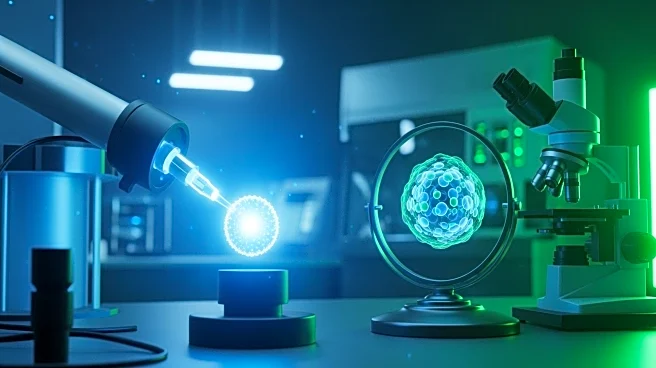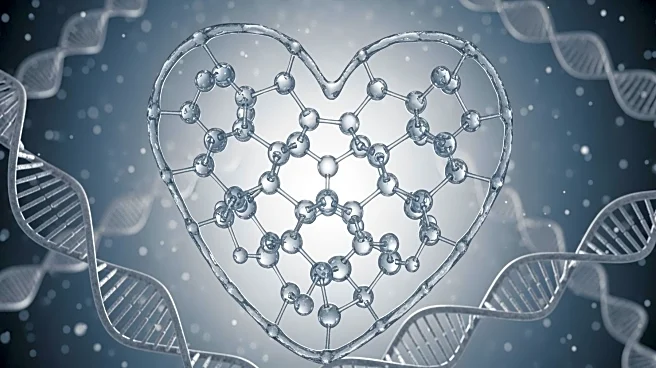What's Happening?
Recent research has highlighted the role of Piezo1, a mechanosensitive ion channel, in bone health. The study focused on the effects of Piezo1 invalidation in PDGFRα-expressing cells, which led to osteoporosis
and increased bone marrow adiposity in mice. Piezo1 is crucial for maintaining bone density and preventing the accumulation of bone marrow adipocytes. The research involved genetically modifying mice to lack Piezo1 in specific cells, resulting in significant reductions in bone volume and density, alongside increased adiposity in the bone marrow. These findings suggest that Piezo1 plays a vital role in the differentiation of bone marrow mesenchymal stem cells (BMMSCs), shifting their lineage commitment from adipocytes to osteoblasts.
Why It's Important?
The implications of this study are significant for understanding osteoporosis, a condition characterized by weakened bones and increased fracture risk. By identifying Piezo1 as a key regulator of bone density and marrow adiposity, new therapeutic strategies could be developed to target this ion channel, potentially reversing or preventing osteoporosis. This could benefit millions of individuals, particularly the elderly, who are at higher risk for bone-related diseases. Furthermore, the study provides insights into the mechanotransduction processes in bone health, which could lead to advancements in regenerative medicine and stem cell therapy.
What's Next?
Future research may focus on developing drugs that can modulate Piezo1 activity to enhance bone formation and reduce marrow adiposity. Clinical trials could be initiated to test the efficacy of Piezo1-targeted therapies in humans. Additionally, further studies might explore the role of Piezo1 in other tissues and its potential impact on systemic health. Understanding the broader effects of Piezo1 activation could lead to comprehensive treatments for various conditions associated with aging and mechanical stress.
Beyond the Headlines
The study also touches on the ethical considerations of genetic manipulation in research. As scientists explore gene editing techniques to address health issues, the potential for unintended consequences must be carefully weighed. Moreover, the cultural and societal implications of advancing such technologies could spark debates on accessibility and equity in healthcare.











